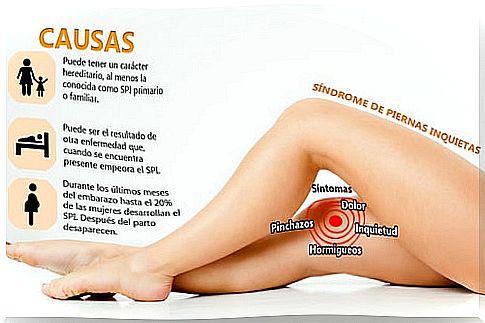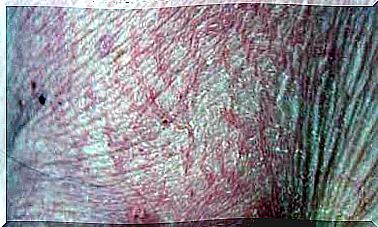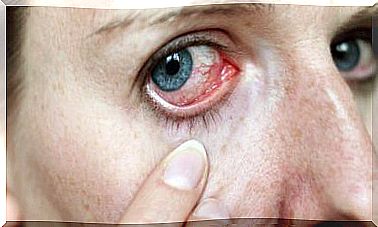Restless Legs Syndrome (Uncontrolled Movements)
Restless legs syndrome symptoms can make it difficult for you to rest every day. We give you some ideas to try to alleviate your symptoms.

If you are worried about the urge to move your legs when you lie down or if you have unpleasant tingling, pain or itching in your legs that persists at night, you may have a sleep disorder known as Leg Syndrome. Restless (SPI).
Fortunately, restless legs syndrome can be relieved with medical treatment and a healthy lifestyle. Next, we will share with you 12 tips that could help you alleviate the symptoms of Restless Legs Syndrome.
What is Restless Legs Syndrome?
Based on an article published in the Journal of Internal Medicine , we can say that Restless Legs Syndrome is a recognized neurological disorder that can interfere with rest or sleep.
RLS has been known since the 17th century, when Thomas Willis, an English physician who has gone down in history for his description of the arterial anastomoses at the base of the skull known as the polygon of Willis.
If you have restless leg syndrome, a typical night might look like this:
- You lie down in bed, ready to go to sleep, and just as your body begins to relax, uncomfortable sensations in your legs begin to overwhelm you.
- You try to ignore the crawling, tingling, or itchy legs, hoping it’ll go away, but it gets worse.
- You toss and turn for a while, but the urge to move becomes greater.
- You have to get out of bed to stretch and walk to find relief.
- However, when you lie down again, the restless sensations in your legs begin again.
- You have Restless Legs Syndrome.

Relieve Restless Legs Syndrome
If you think you have this disorder, you should visit your doctor and follow the prescribed treatment and general indications. Either way, you could try the following tips to see if any of them give you some relief.
1. Get up and walk
Walking can help relieve discomfort in your legs. An evening walk around the house can calm your legs enough to keep them that way when you go to bed.
2. Cut back on caffeine

Take a look at your caffeine intake. Tea, chocolate, and soda can contain it. A study published in the IOSR Journal of Pharmacy and Biological Sciences pointed out that a woman suffering from this disease managed to improve her symptoms by reducing the consumption of this substance. Try reducing your consumption of foods and medications with caffeine (after medical consultation, of course) to see if your condition improves.
3. Avoid tobacco and alcohol
Some specialists suggest that the consumption of tobacco and / or alcohol could act as a stimulant, worsening the symptoms of the disease. However, an article in Neurogical Sciences notes that the possible positive effects of chewing tobacco to relieve symptoms are being studied. Check with your doctor about this for the latest information on the subject.
4. Modify your medications
Some over-the-counter medications, such as certain cold medications and allergy lozenges, contain mild stimulants that may promote shaky legs. Ask your pharmacist if the medications you are taking contain stimulants and if there are any alternatives to them.
5. Take a bath
A hot bath or bedtime massage can help you relax your muscles and therefore could be helpful in getting that much-needed extra dose of reassurance.
6. Change your temperature
Some people argue that changing from hot to cold or cold to hot might help. Try putting a heating pad or warm compress on your legs for a short time. If that doesn’t work, put a cold towel on your legs or soak your feet in cold water.
7. Make sure you are eating well
Although there are no scientific studies on this, there would be some indications that a deficiency of iron, folic acid or magnesium could contribute to restless legs syndrome. By eating a wide variety of nutrient-dense foods, you get the vitamins and minerals you need. However, your doctor may recommend supplements for these specific nutrients.
8. Create a bedtime habit

Establish a regular routine that will help calm your mind and body. Getting to bed at around the same time each night can be a great idea. Try this proposal, you don’t lose anything!
9. Exercise your legs
Research from 2006 indicated that moderate aerobic exercise would help improve symptoms, although excessive exercise could aggravate them. A daily walk at a moderate pace or starting a yoga course could be two great exercise options.
10. Calm your stress

The exact causes of restless legs syndrome are not known, but popular folklore claims that stress can aggravate symptoms. Regular exercise and relaxation techniques, such as meditation, visualization, or even an engaging hobby, could then help you de-stress and perhaps improve symptoms.
11. Stretch your legs
Although there is no scientific evidence on this, it is believed that stretching the calves, hamstrings, and glutes before bed may help improve symptoms.
12. Wear socks to sleep
In some publications it is pointed out that a large number of people who suffer from restless leg syndrome also seem to have cold feet. Although we have not found a scientific publication that points out this information and evidently, no one has studied the connection, it is not enough to wear socks to sleep.
If you think you may be suffering from restless legs syndrome, don’t wait any longer and go to your doctor. He will explore you and decide what is the best treatment for your symptoms.









